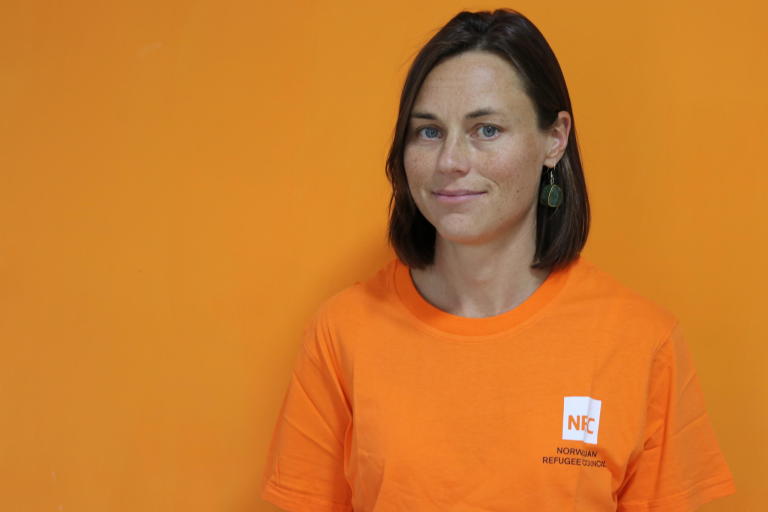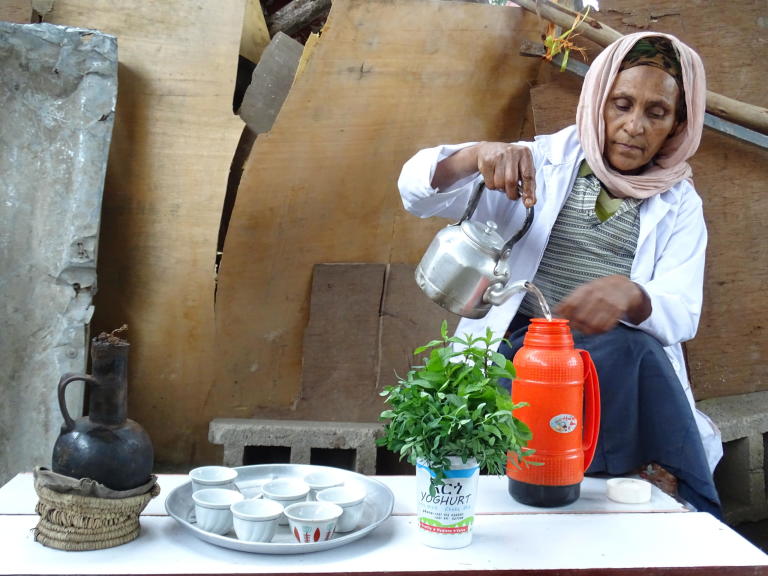Date: Tuesday, 22 May 2018

In January 2018, Ethiopia hosts close to 900,000 refugees, and the number is growing. They are mainly from neighbouring South Sudan, Eritrea, Sudan and Somalia. More than 1.5 million people in Ethiopia are internally displaced.
How, then, is Ethiopia welcoming its refugees? We asked the Norwegian Refugee Council's (NRC) country director Stine Paus.
"The main refugee population in Ethiopia comes from South Sudan. There are now 400,000 South Sudanese in Ethiopia who have fled the civil war in their home country.
The second largest population comes from Somalia. Many of them have been in Ethiopia for a long time, but the situation in Somalia is not stable, and people move back and forth across the border between the two countries.
Ethiopia also hosts a significant refugee population from Eritrea. Many are not staying for a long time, but are using Ethiopia as a transit country. Still, a significant Eritrean population remains in Ethiopia.
In addition, there are refugees from Sudan, Yemen and other African countries."

"Yes, there are more than 1,5 million internally displaced people in Ethiopia.
Some have fled because of drought. They are mainly pastoralists and from very mobile communities. When their animals die, they lose their livelihood and have to seek assistance to survive. It’s a different kind of displacement, because it is a mobile population who stops moving because they cannot continue with their way of life.
Recently, a lot of people have been displaced because of unrest along the border between the Oromia and Somali regions. NRC is working alongside the Government to assist the IDPs and to find durable solutions to their displacement.
How is Ethiopia working to improve refugees’ lives in Ethiopia?
"In September 2016, the Un Summit on Refugees and Migrants in New York aimed to find comprehensive solutions for refugees and migrants. Ethiopia was one of the most progressive countries in pledging that they would do more to enhance local integration of refugees.
They made nine pledges following the main principle of making it easier for refugees in the country to live outside of camps. Ethiopia has led an encampment policy for many years, and now the Government says that in 10 years’ time there shall be no refugee camps in Ethiopia. This is very ambitious, maybe too ambitious, but it’s also a very positive ambition. We have to find good solutions for refugees and a camp is never a solution in the long run.

"The pledges are linked to livelihood, education and civil documentation. Some refugees will be able to access work permits, which has not been the case up until now. Some will have the opportunity to work in new industrial zones. The authorities have promised that 30 per cent of the jobs in new industrial parks will be reserved for refugees. This means that if there are 100,000 jobs in total, there will be 30,000 jobs for refugees.
Refugees will be able to access the national education system and obtain land for agriculture. Those who have lived in Ethiopia for 20 years or more will be allowed citizenship. They will also be able to obtain civil documentation, such as certificates for births, deaths and marriages. This is the only one of the pledges to have been put into a legal framework so far.
Ethiopia is currently revising its refugee proclamation and we don’t know yet when it will be approved. It’s at draft stage and it’s important that the legal aspect is there, before all these things can be put into action."
"This is important because life in a camp is never a solution. It’s a temporary situation that sometimes becomes very protracted.
When living in a camp, it’s difficult to prepare yourself for what happens next, whether you return home, become locally integrated or are relocated to a third country. Particularly if the solution is local integration, you will be better prepared if you are in the same schools as the local community, or have a job. I think self-reliance is a necessary step. Whatever the solution is, self-reliance and education are at the core of it."
"Many, and particularly Eritrean refugees who arrive in Ethiopia, go on to attempt irregular migration through Sudan and Libya and across the Mediterranean.
For the time being, unfortunately, there is still no room for refugees in Ethiopia to work legally in the country. And even if there was, the opportunities are very limited. Even though Ethiopia is experiencing economic growth, the regions receiving refugees are mostly very poor and unemployment is very high. That’s also the reality for the refugees.
Also, many of those arriving are determined to go on toward Europe even before they come to Ethiopia, and they might not be investing much efforts in trying to find out whether there could really be a future for them in Ethiopia."

"I think they are quite aware of the dangers of travelling. They are communicating with people who have already made the journey. In addition, smugglers and human traffickers are communicating with people through social media, convincing them and facilitating their journey.
I believe it’s in the human nature, that even though you know of all the dangers, you think “I’ll be fine.” I don’t think talking about the challenges of integration and so on in Europe makes a big impression. They are worried about the dangers of the journey, but I think they see every person that has actually made it to Italy or elsewhere as a success.
I don’t believe European countries’ information campaigns about the dangers crossing the desert and then the sea are efficient. Those who have decided to go understand who is providing the messages and what their political agenda is. It’s a complex situation but it is also very sad, because especially children and youth are very vulnerable and have a much lesser chance of making it than others. The statistics show that it’s much more likely that you’ll manage the journey if you’re an adult man and not a young boy or girl."
"It’s important for Norway to do more than one thing. We should continue providing emergency relief in refugee receiving areas, such as the camps in Ethiopia.
Governments such as Norway need to think about what they can do to support development initiatives in Ethiopia which eventually allows for local integration as one solution for the refugees.
Some refugees will need to be resettled to third countries, especially in cases with unaccompanied children who have families in other countries. Those countries need to facilitate so that these children can be reunited with their families.
The governments have to see what efforts they can do on many different levels. They should be involved in trying to find political solution to these conflicts, which eventually will allow for return."
"Ethiopia has multiple emergencies going on, and we are here to support the government, as the government is taking the lead in the refugee and internal displacement response.
Our work is to address the needs and find solutions for displaced communities, and as Ethiopia hosts a large refugee population, and a large population of internally displaced people, it’s obvious that our mission is very relevant in the country.
We provide clean water and sanitation, shelter, education, food security and livelihoods. In 2018 we started information and counselling activities for refugees and host community to help them obtain important documents such as identity documents and birth certificates, which are important to access social services. This goes well with the way the government is now working to improve the situation for displaced communities.
We are working very closely with the government to see where we can have an added value in assisting refugees and contributing to durable solutions."